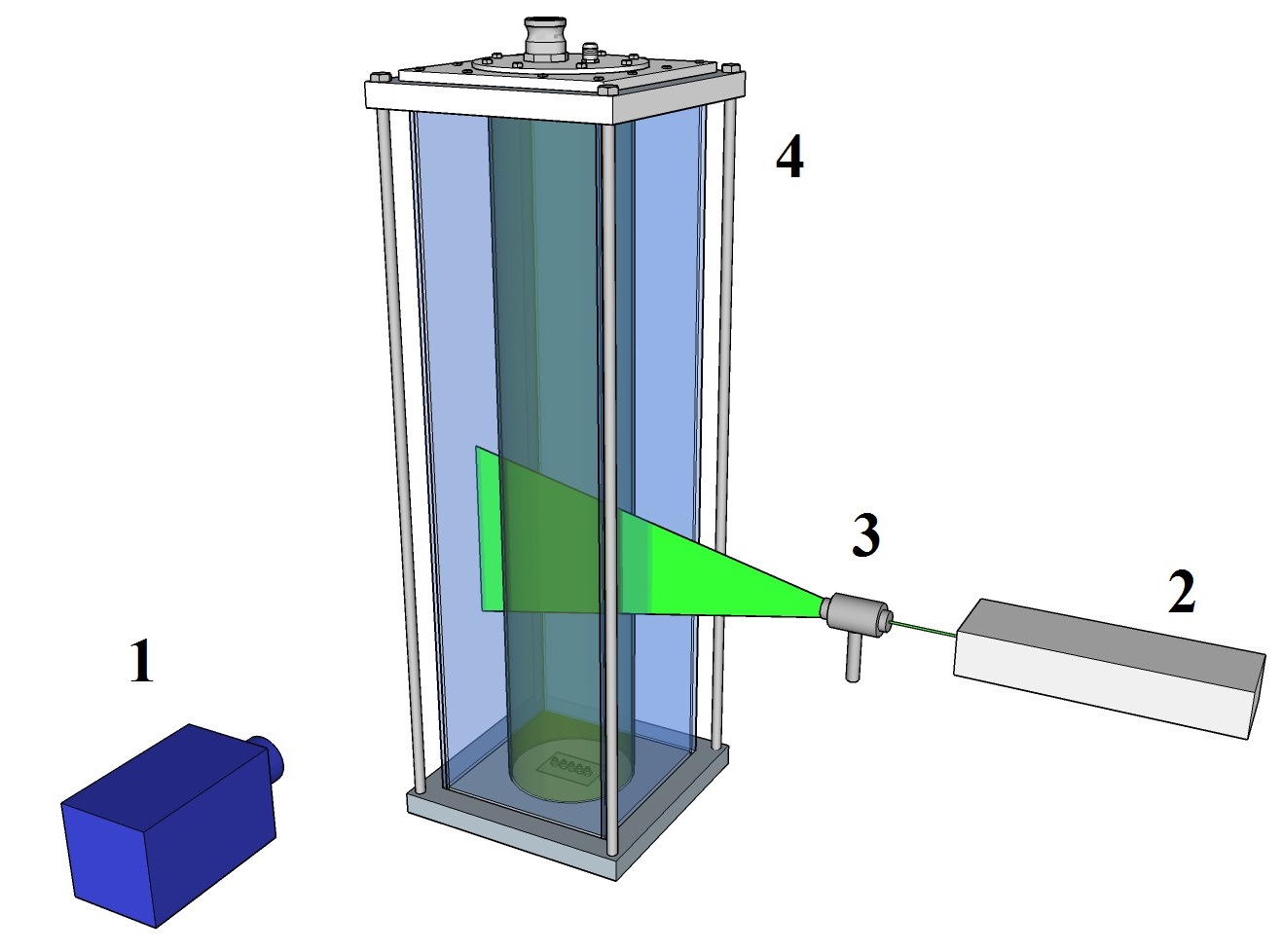Laser Induced Fluorescence (LIF)
Measurement principles:
This fluorescence imaging method is used to measure instant whole-field contentration or temperature maps in flows.
In a typical experiment one of the applied fluid has fluorescence ability. The flow is illuminated by a laser light sheet to excite the fluorescence tracers. The tracer absorbs the incident light and is promoted to a higher electronic energy state. The excited tracer then emittes light (fluorescence). With a camera, which is equipped a tracer-relevant filter, the emitted light is recorded and is a measure for concentration.
Here this method is also used with two different tracers as "Two-tracer-laser-induced fluorescence" (2T-LIF) in order to minimize the shadow effects of the bubbles. One of the tracers is sensitive to the concentration change (uranine for pH), the other tracer is insensitive (pyridine 2) and gives instantaneous background images that represent the light situation in the measurement field.
Advantages
- The technique is non-intrusive
- It gives quantitative and accurate measurements of concentration or temperature fields
- It is possible to use more different tracers at one time
- Combinable with velocity measurements
- It gives quantitative and accurate measurements of concentration or temperature fields
- It is possible to use more different tracers at one time
- Combinable with velocity measurements
 1: Digital camera(s)
1: Digital camera(s)2: Light source (laser or LED)
3: Light sheet optic
4: Bubble column
(1) Fluorescence image of uranin

(2) Fluorescence image of pyridine 2

Image (1) divided by image (2)

Basics